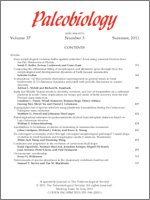Species abundance data are of vital importance in paleontology, but fossil accumulations invariably represent a biased subset of original source communities. Efforts to quantify taphonomic biases are typically prevented by a lack of independent data on the ecological composition of prehistoric faunas. However, analysis of the continental Holocene record can provide a rare opportunity for independent calibration of fossil abundance patterns. We analyzed a comprehensive data set available for the Holocene avifauna of Sweden to investigate the relationship between species abundance in the recent fossil and zooarchaeological records and in prehistoric source communities, and to characterize the importance of different ecological factors in determining terrestrial vertebrate fossil abundances. The number of assemblages in which species occurred was compared with modern-day species abundance, annual residence, body mass, and ecological realm. Modern-day abundance is only one of several significant predictors of fossil abundance; the strongest predictor is body mass, and Holocene species abundance can be interpreted as a measure of species abundance in source communities for a given size class only. Our study represents one of the only direct attempts to quantify species abundance biases between fossil faunas and source communities, and has general applicability for a wide range of terrestrial vertebrate faunas.
How to translate text using browser tools
1 June 2011
Determinants of species abundance in the Quaternary vertebrate fossil record
Samuel T. Turvey,
Tim M. Blackburn
ACCESS THE FULL ARTICLE
<
Previous Article
|

Paleobiology
Vol. 37 • No. 3
Summer 2011
Vol. 37 • No. 3
Summer 2011




